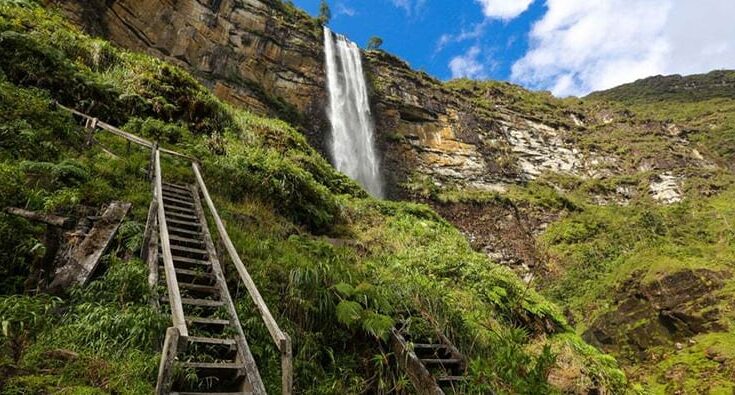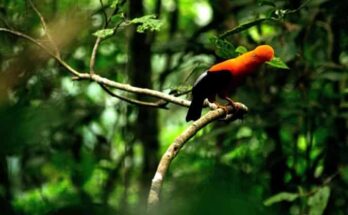The Gocta Waterfall is indeed one of Peru’s most magnificent natural wonders, known for its breathtaking beauty and impressive height. Here’s an overview of Gocta Waterfall:
Location and Geography:
- Location: Gocta Waterfall is located in the Amazonas region of northern Peru, near the town of Chachapoyas. It is situated within the cloud forest of the Andes Mountains.
- Height: Gocta is often cited as one of the tallest waterfalls in the world. While its exact height has been the subject of debate and varies depending on the methodology used for measurement, it is generally accepted to be around 771 meters (2,530 feet) tall in two main drops. This makes it one of the highest free-falling waterfalls in the world.
Discovery and Recognition:
- Discovery: Although local residents were aware of Gocta for generations, the waterfall gained international attention in 2005 when a German explorer, Stefan Ziemendorff, publicized its existence. Prior to Ziemendorff’s exploration, Gocta was relatively unknown outside of the local community.
- Recognition: Following its discovery, Gocta quickly became a popular tourist destination, attracting visitors from around the world who come to admire its natural beauty and stunning surroundings.
Flora and Fauna:
- Biodiversity: The area surrounding Gocta Waterfall is rich in biodiversity, with lush cloud forests teeming with a variety of plant and animal species. Visitors to the waterfall may encounter diverse flora and fauna, including orchids, bromeliads, butterflies, and numerous bird species.
- Protected Area: The region around Gocta Waterfall has been designated as a protected area to conserve its unique ecosystem and biodiversity. Efforts are underway to preserve the cloud forest and its inhabitants for future generations.
Tourism and Accessibility:
- Tourist Attractions: In addition to the waterfall itself, the region offers various tourist attractions and outdoor activities, including hiking, birdwatching, and exploring nearby archaeological sites such as the ancient fortress of Kuelap.
- Accessibility: Access to Gocta Waterfall typically involves a hike through the lush forest, which can take several hours depending on the starting point and hiking pace. Local guides are available to lead visitors on guided treks to the waterfall, providing information about the area’s ecology and history along the way.
Conservation Challenges:
- Environmental Threats: Despite its protected status, the region faces various environmental threats, including deforestation, habitat destruction, and unsustainable tourism practices. Efforts are needed to address these challenges and ensure the long-term conservation of Gocta Waterfall and its surrounding ecosystem.
Despite these challenges, Gocta Waterfall continues to captivate visitors with its stunning beauty and impressive stature, serving as a symbol of Peru’s natural heritage and the importance of conservation efforts in preserving such unique ecosystems.



